How to choose a hood over a gas stove: what criteria to consider when choosing a suitable model
Any odors arising during cooking should not leave the kitchen. Agree that the aroma of even the most delicious home-made cake does not have a place in the living room or bedroom. Good exhaust equipment easily copes with the aromas of even the most complex dishes and effectively cleans the air. Knowing how to choose a hood over a gas stove, any housewife will be able to create her culinary masterpieces without fear to fill the apartment with undesirable odors.
In this publication, we will consider the types of cooker hoods, determine their advantages and disadvantages, and talk about the intricacies of selecting the optimal model and the principles of calculating the necessary equipment performance.
The content of the article:
What problems does the hood solve?
Removing the aromas of cooking is not the only task of a quality exhaust device. In addition, particles of fat separated during frying, possible soot and combustion products are also carried away with the air flow. Powerful equipment helps keep furniture and a kitchen tile apron clean, as anything that could settle on work surfaces goes into the duct.
Air purification is another function of the exhaust device. However, this option is not available in every model: only recirculation hoods can clean the polluted air, removing all impurities from it, which positively affects the internal microclimate of the housing.
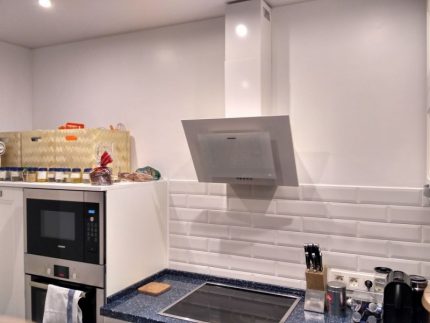
In addition, hoods for a household gas stove are also a spectacular piece of furniture. Modern models perfectly fit into any popular design: laconic recirculation hoods delicately emphasize the decoration in a minimalist or high-tech style, and powerful dome units become an organic part of both the classic direction and the Provence style.
Types of hoods for gas stoves
To determine which hood is needed specifically for your gas stove, it is worth sorting out their varieties.
According to the principle of air purification, hoods are divided into: recirculating, vented and combinedoperating in the exhaust mode or in the recirculation mode.Let's talk about the first two in more detail.
Recycling Cooker Hoods
Air purification in such an extract occurs due to special filters. The air mass is carried away through the air duct, overcomes the coarse grease filter, which delays combustion products and grease suspension. Then the air freed from polluting particles is cleaned of odors using a special filter - most often coal.
In fact, such an extract “drives” the same air, simply passing it through its filtration system. As a result, the buyer receives roughly cleaned air, not rid of excess moisture and not enriched with oxygen.
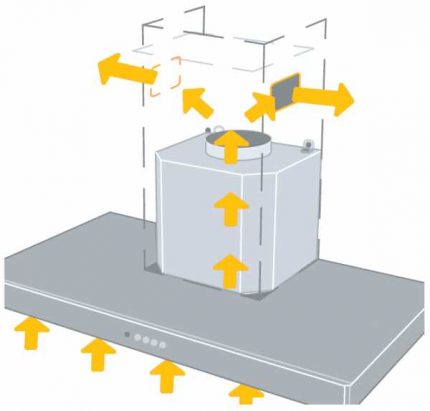
The advantages of such models are their cost, simplicity of design and direct installation, because they do not need to be connected to the ventilation system.
However, there is a significant minus: the cleaning filter must be changed periodically. The frequency of replacement depends on the manufacturer’s recommendations and the intensity of the work: the more often you cook, the faster the filter unit becomes clogged. At the same time, recirculation modifications are less efficient.
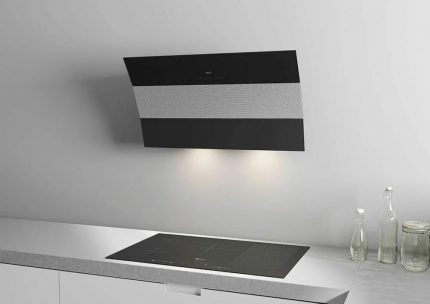
The disadvantages of such hoods fade against the backdrop of a spectacular design. Models operating on the principle of recycling are optimally suited for small kitchens, as they do not visually overload the already limited space.
We talked in more detail about the recirculation hood next article.
Flow or exhaust hoods
These are more complex devices that work on a different principle. The equipment draws in air currents that pass through the duct and are released to the outside. They only cost grease filter.
These devices do not work without a ventilation system or direct exhaust air flow. This is the main disadvantage of the flow hood: it must be connected to the duct, which should bring the exhaust air to the street or to the shaft of the ventilation system.
In addition to the complexity of installation exhaust hood with ventilation and costs significantly more. However, all this is compensated by performance: it is flowing models that can provide the maximum purification of air from odors, soot, fat, excessive humidity.
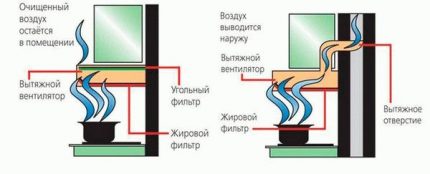
Cooker hoods are also divided according to the installation principle. According to this criterion, the technique is divided into three types: built-in, flat suspended and domed.
So, built-in hoods mounted directly into the hanging modules of the kitchen. Typically, these are recirculation devices, often with a telescopic telescopic design. The main advantage of such an extract is compactness and invisibility. Such a model can fit into almost any interior.
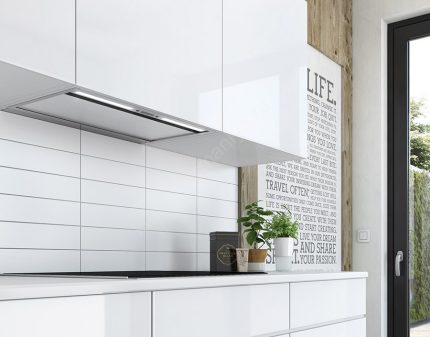
Flat hanging or tilting hoods also usually operate on the principle of recirculation. But there are flowing models, which provide for the removal of polluted air to the street or to the shaft of the ventilation system.
The equipment can be hung under a cabinet or shelf or mounted as a separate unit.
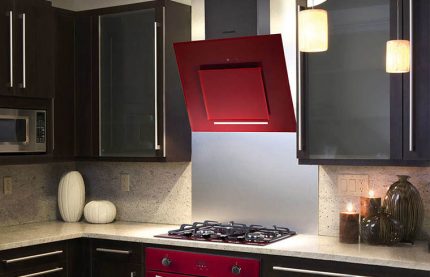
Dome or fireplace hoods are the most powerful and, alas, the most expensive models.
Such equipment is distinguished by the highest productivity and an abundance of additional options, they can be combined - work, if necessary, in the exhaust mode, removing exhaust air outside the premises, or recirculating, cleaning the polluted air masses and returning them back to the room.
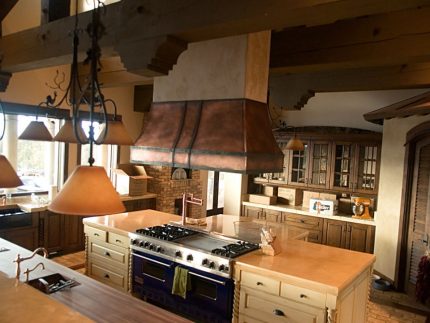
So which hoods are best suited specifically for gas stoves? Objectively, these are flowing models with a conclusion to the street. During the operation of the gas hob or stove, soot is formed, the combustion products of the gas-air mixture, so it is better to remove the air outside, and it is also important to take care of the proper arrangement ventilation in the kitchen.
For electric hobs, simpler recirculation options are also suitable. They are appropriate in the kitchen with a gas stove, however, the buyer will have to more carefully choose the model suitable for his home environment.
Cooker hood selection criteria
The future owner needs to make a choice in favor of a flow, recirculation or combined hood, to determine the type of installation.
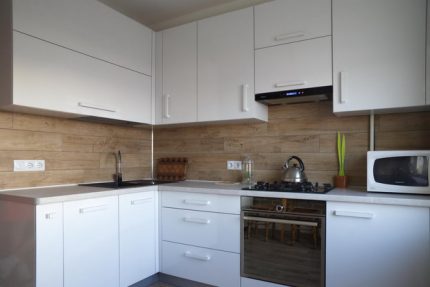
Also, the buyer should pay attention to several other important aspects of the choice of hoods for a gas stove.
- Hood width must be greater than or equal to the width of the slab. This is the only way equipment can fully capture the streams of polluted air. Thus, a model with a width of 90 cm will become the optimal size of an effective hood over a gas stove 60 cm wide.
- Number of speed modes - the more they are provided in the hood, the more flexible its operation will be.
- Noise levelcreated by the equipment during operation should be acceptable to the family. Models that work quite quietly do not produce sounds louder than 45 dB. The average noise level for a normally working hood is around 50 dB. You can find out the noise threshold in each operating mode from the instructions or the passport to the hood.
- Type of hood control should be user friendly. Mechanical provides rotary mode switches, electronic is carried out using a sensitive touch panel or remotely thanks to the remote control. Hoods controlled by conventional buttons are also in demand. However, the gaps between the buttons and the hood body are often contaminated, which gives the hostess additional inconvenience.
- Advanced options, for example, backlighting or the presence of special disinfecting lamps, will be a nice bonus for a high-quality model.
Equipment performance - The most important characteristic for the hood, which is worth talking about in more detail. This parameter shows how many cubic meters of air the device can efficiently pass through itself in one hour.
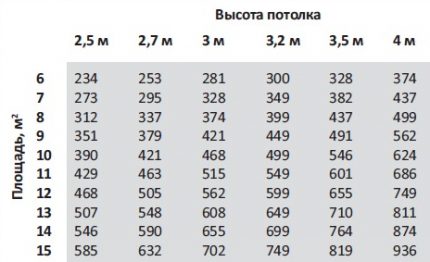
The higher the performance of the hood, the better. However, with its growth, equipment noise also increases. Selection of the hood according to its performance requires a particularly responsible approach. It is better to calculate in advance the amount of air that needs to be processed by an exhaust device.
Calculation of the minimum allowable performance
In order not to make a mistake in choosing and buy the model that is optimal for your kitchen, you should familiarize yourself with the formula for calculating the performance of exhaust equipment.
The calculations take place in several stages.
- First you need to multiply the area of the entire kitchen by the height of its walls.
- The result is multiplied by the rate of air exchange per hour, which is 12.
- This value is multiplied by an additional factor of 2. For electric hobs, it is 1.7.
- To the calculated minimum performance threshold, an additional 10% of its value for each meter of the length of the air pipe and each bend is added. Another 10% are summed up in case of emergency. The result obtained is final.
There is also a simpler calculation formula, according to which the volume of the kitchen (the product of the area and the height of the walls) must be increased 10 times.
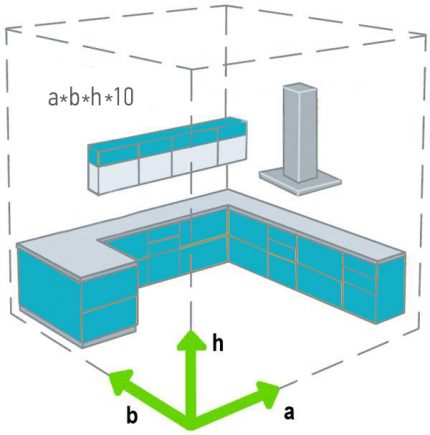
The simplified formula for calculating the minimum hood performance does not take into account the most important nuances: type of hob, length of the air pipe and its bends. We recommend that you familiarize yourself with hood calculationtaking into account all the nuances.
Based on such calculations, you can find out if the installed hood matches your needs. Perhaps the device should be changed to a more powerful one.
Features of installing the hood over the stove
An important role in the efficiency of equipment plays hood hanging height. In order for the equipment to clean the air efficiently, a certain distance must be observed between it and the hob.
It is necessary to mount the hood above the gas stove at a height of at least 75 cm. This will protect the device from damage due to high temperature and will not affect the work of the hob.
Excessive hoods can be suspended a little further, as the air flows can partially extinguish the flame, due to which the burners will work unevenly. For electric stoves, a distance of 60 cm is considered acceptable.

We must not forget about the growth of the mistress. The equipment should be suspended in such a way that it is convenient for the owner to reach his control panel. Installation at a height suitable for the buyer will additionally protect a person from accidental burns.
In addition to venting into ventilation, it is important to ensure the flow of air into the room in the right amount. What can I use wall inlet valve.
We also recommend to see the detailed hood installation manual three different types: built-in, inclined and dome.
Conclusions and useful video on the topic
Replacing a carbon filter in a recirculation hood is a fairly common procedure. However, a failed filter can be tried to be restored. The video shows how to do this:
Replacing the grease filter is discussed in more detail by other masters:
A competent choice of hoods for a gas stove will save homeowners from a lot of problems. Therefore, the purchase of such equipment should be taken with all responsibility and purchase models that are fully consistent with the area of the kitchen. And then not a single extraneous smell penetrates into other rooms, and the cooking itself becomes as safe as possible.
Still have questions about choosing a hood? Or do you want to supplement our article with useful recommendations? Write your comments, ask questions, participate in the discussion - the feedback form is located below.

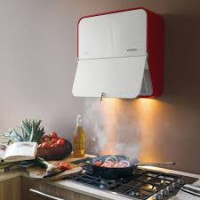 Hood installation height above gas and electric stoves: generally accepted standards
Hood installation height above gas and electric stoves: generally accepted standards 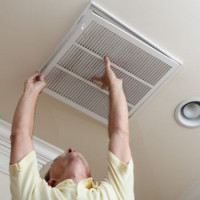 Repair of ventilation in the toilet and bathroom: how to identify and repair the hood in the bathroom yourself
Repair of ventilation in the toilet and bathroom: how to identify and repair the hood in the bathroom yourself 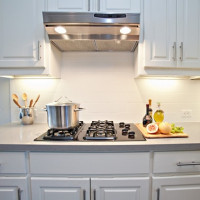 How to clean the hood in the kitchen of fat: the most effective means and methods
How to clean the hood in the kitchen of fat: the most effective means and methods 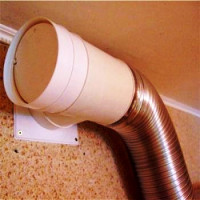 Check valve for ventilation: how to arrange ventilation with a check valve on the hood
Check valve for ventilation: how to arrange ventilation with a check valve on the hood 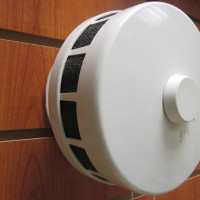 Which supply valve to choose: varieties of valves, features of choice + overview of the best brands
Which supply valve to choose: varieties of valves, features of choice + overview of the best brands 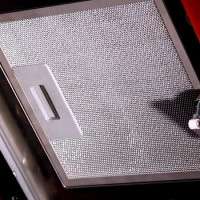 Fat filters for hoods: varieties, their features and disadvantages + how to choose
Fat filters for hoods: varieties, their features and disadvantages + how to choose  How much does it cost to connect gas to a private house: the price of organizing gas supply
How much does it cost to connect gas to a private house: the price of organizing gas supply  The best washing machines with dryer: model rating and customer tips
The best washing machines with dryer: model rating and customer tips  What is the color temperature of light and the nuances of choosing the temperature of the lamps to suit your needs
What is the color temperature of light and the nuances of choosing the temperature of the lamps to suit your needs  Replacement of a geyser in an apartment: replacement paperwork + basic norms and requirements
Replacement of a geyser in an apartment: replacement paperwork + basic norms and requirements
Thank you so much, everything is clear and understandable!